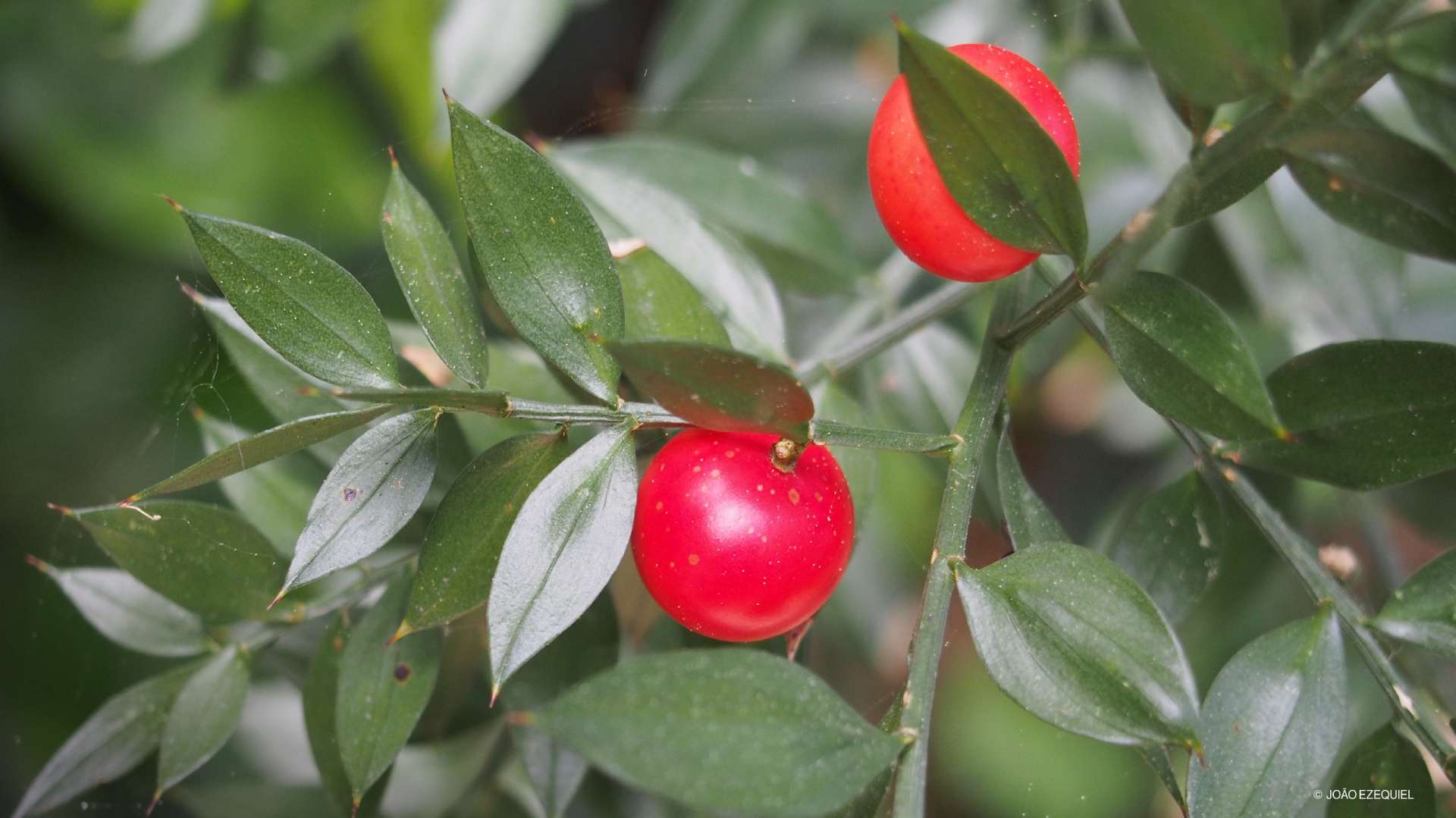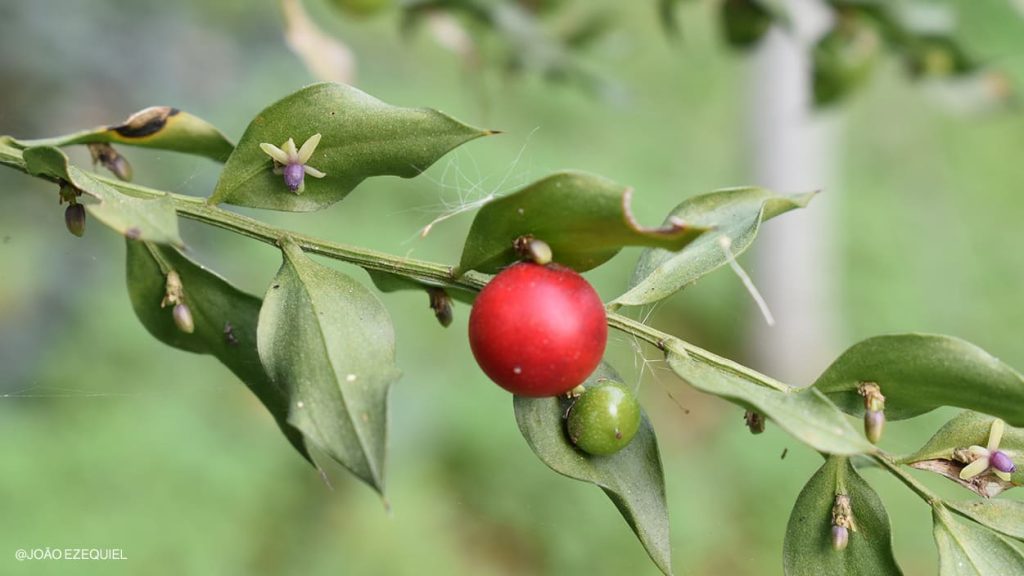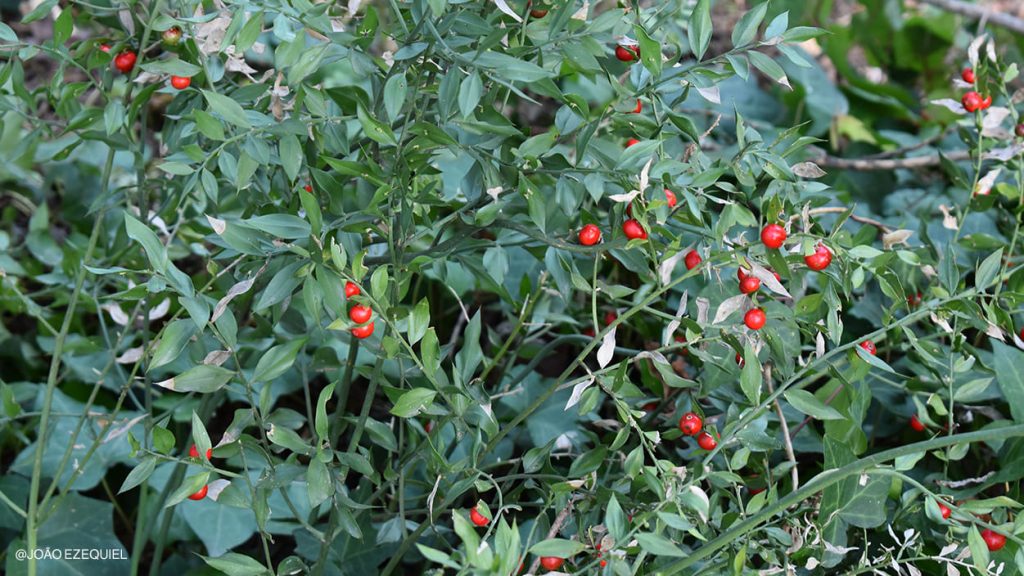The butcher’s-broom is a beautiful perennial shrub, known for the red berries that give it colour in the middle of winter. Despite being relatively common in Portuguese forests, it is a species whose harvest in the wild is prohibited in Europe by the Habitats Directive (annex V).
The butcher’s-broom is a shrub of the Asparagaceae family – related to hyacinths (Hyacinthoides spp.) and asparagus (Asparagus spp.) – that gained ornamental value due to the beauty and contrast between the dark green tone of its stems and the bright red of the berries that grace it naturally during the autumn and early winter months.
This aesthetic, similar to that of the holly (Ilex aquifolium), is one of the reasons why the butcher’s-broom became very popular for Christmas decorations – it eventually became known as “false holly” – which increased uncontrolled harvesting. This risk led the European authorities to include Ruscus aculeatus in the list of species included in the Habitats Directive – Annex V, which conditions its harvest in the wild. Even so, the butcher’s-broom is relatively common in Portugal and its populations were considered stable in most European countries, in the assessment made by the IUCN Red List , which considers it “Least Concern” in terms of protection.
Whilst it is true that the fruits of the holly and holly tree appear similar (both appear in the summer and remain red during the winter), in truth, even these fruits are different, since in the butcher’s-broom they are berries (which may have more than one seed inside), whereas in the holly they are drupes (a single stone that protects the seed).
The two plants are not related and there are many more differences between them. For example, in the butcher’s-broom, what look like leaves are actually flat stems (called cladodes) that end in a thorn-like structure (aculeus). It is on these stems that the berries and flowers (much smaller than the berries) appear, with yellowish-white and violet tones. The scale-shaped leaves are hidden under the newly formed stems, but they are so small (measuring only a few millimetres) and fall so quickly that we hardly notice them.





